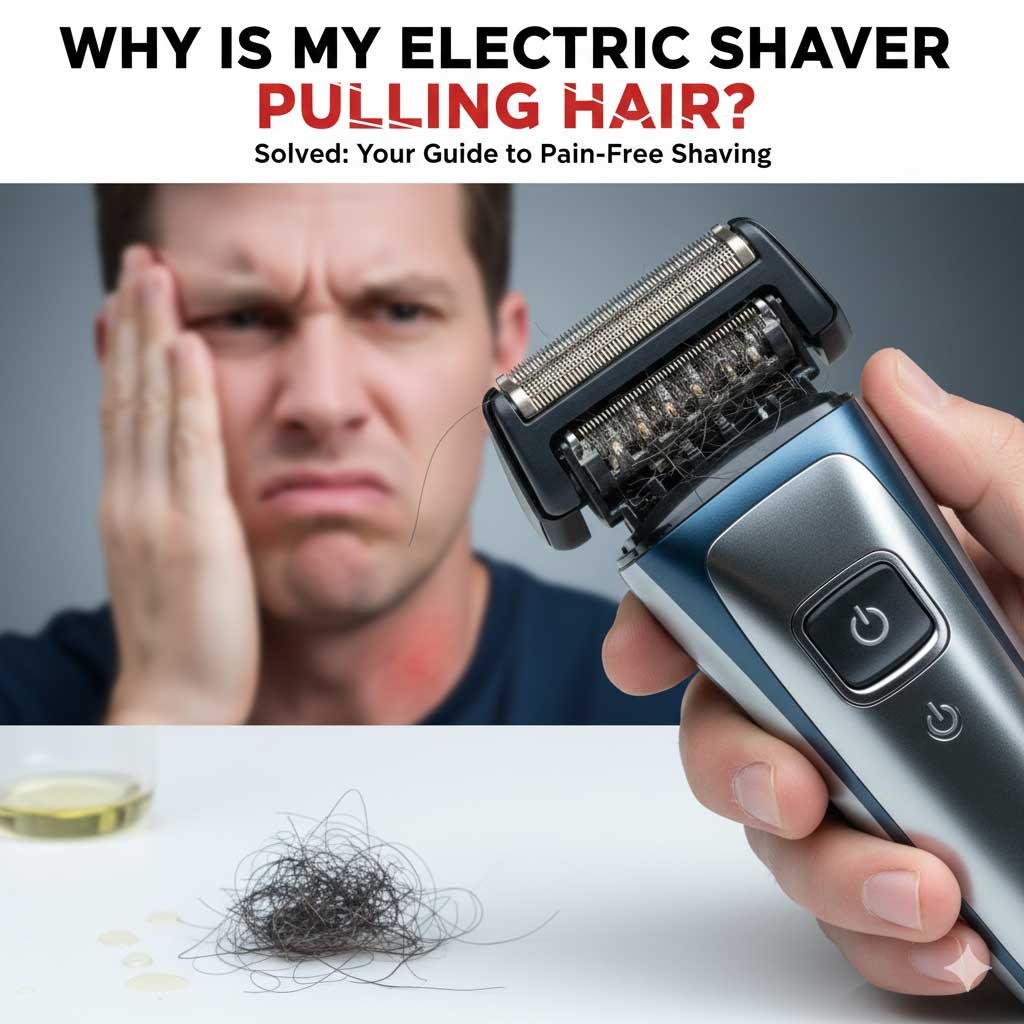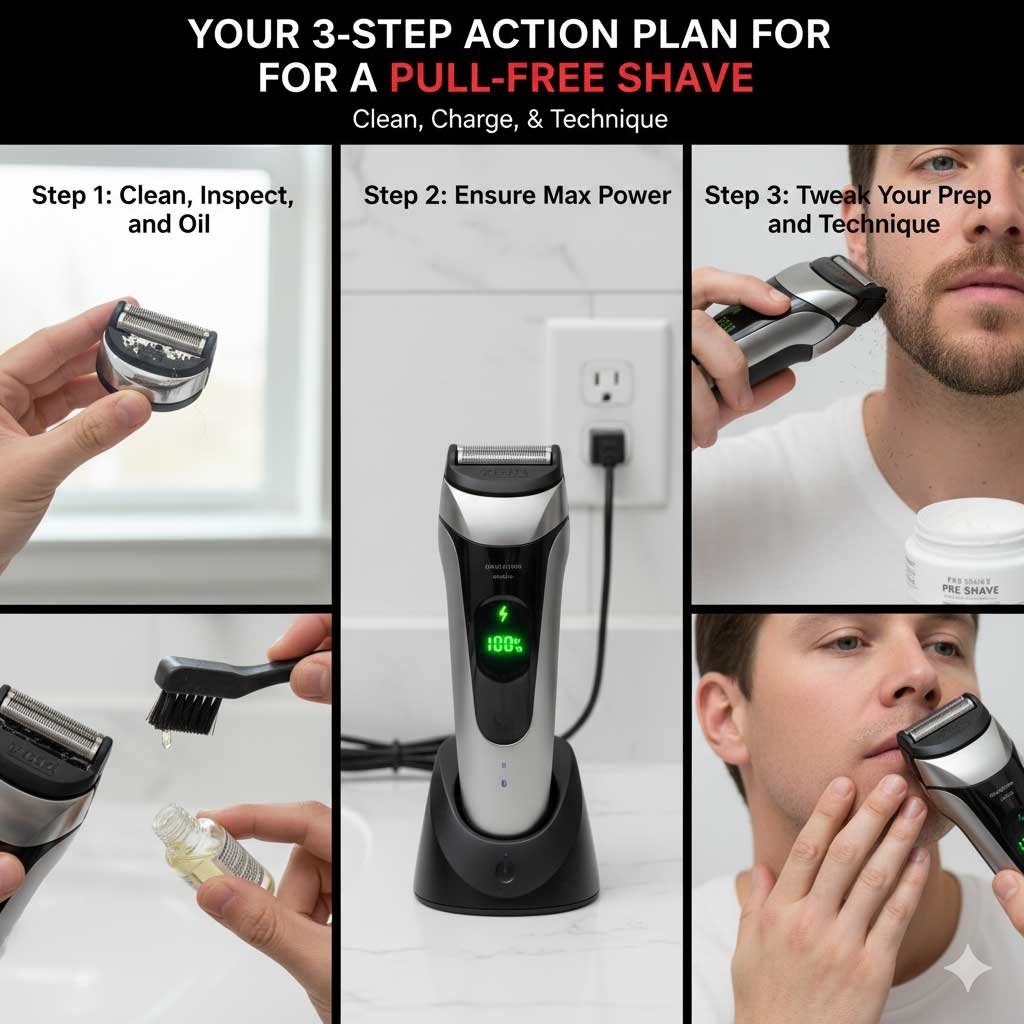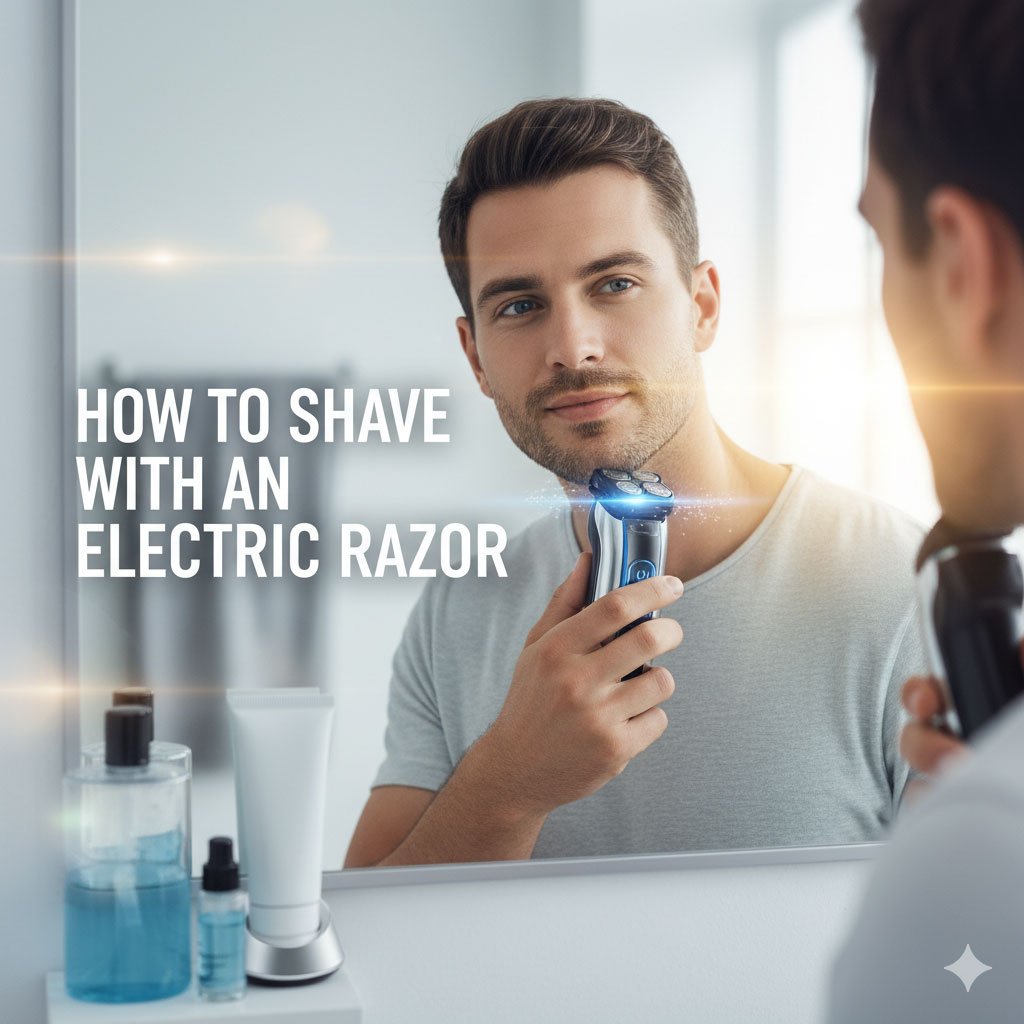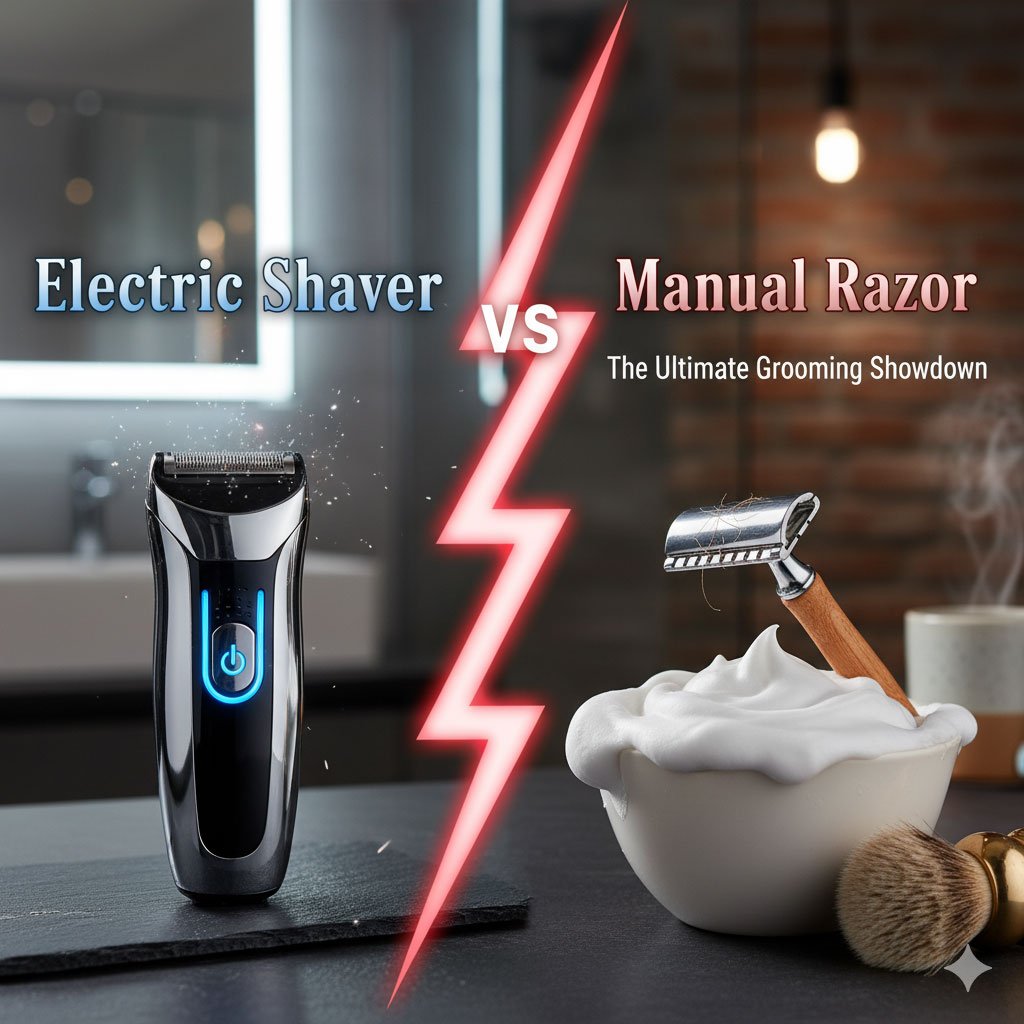Do you brace yourself for a sting every time you turn on your electric shaver? That dreadful buzzing sound should signal a smooth transformation, not a painful, whisker-yanking ordeal. If you are constantly asking yourself, “Why is my electric shaver pulling hair?” and dreading your morning routine, take a deep breath—you’re about to discover why, and more importantly, how to fix it.
That sensation of being plucked instead of shaved isn’t just uncomfortable; it’s a warning sign. It often leads to angry red razor burn, unnecessary friction, and can even cause those stubborn ingrown hairs. This comprehensive guide cuts straight to the core of the problem, offering clear, actionable solutions so you can enjoy a genuinely smooth, comfortable shave every single time. Let’s solve this mystery together!

Table of Contents
The Painful Truth: What’s Making Your Shaver Tug?
The great news is that you don’t need to buy a whole new shaver (yet!). The problem is almost always solvable with a little maintenance or a simple change in routine. However, you need to play detective. The causes typically fall into three distinct areas: your shaver’s condition, your shaving technique, and your pre-shave preparation.
1. The Blade Blunder: When Your Equipment Gives Up
The most common and easily fixable reason for a painful shave is wear and tear on the cutting elements. An electric shaver works by rapidly moving a super-sharp blade beneath a protective screen (foil) or rotating cap. When this intricate setup fails, the blades stop slicing and start snagging the hair.
- Dullness is the Enemy: Think about a kitchen knife. If it’s dull, it tears food instead of cutting it. The same goes for your shaver. Over time, those micro-sharp edges on the inner cutters become rounded and blunt. They grab the hair, yanking it out before finally severing it—ouch! The protective foil or screen can also degrade, making it less effective at guiding the hair.
- The Lubrication Layer is Gone: The high-speed movement of the blades creates intense friction and heat. If you skip lubrication, that friction slows the motor down. When the blades move sluggishly, the hair doesn’t get a clean, crisp cut. Instead, it gets dragged and pulled. You need to keep things running smoothly!
- Hair and Gunk Overload: Every time you shave, tiny hairs, dead skin, and residual cream accumulate inside the shaving head. This sticky, dense buildup is like a brake pad for your shaver’s motor. It slows the cutters, clogs the cutting path, and forces the blades to struggle against a massive obstruction.
- Battery Power Fatigue: Your shaver relies on a powerful motor spinning the blades at hundreds of rotations per second. If you use a rechargeable shaver that is running on a low battery, the motor lacks the necessary strength. That drop in speed makes the cutting action ineffective, resulting in a pronounced, painful pull.
Culprit (Equipment) | Why It Causes Pulling & Snagging | Your Immediate Fix |
Worn Blades/Foil | Blades are too blunt to slice cleanly; foil is damaged. | Replace the shaving cassette/head—it’s essential maintenance. |
No Lubrication | High friction slows blades and creates excess heat. | Apply dedicated shaver oil consistently after every cleaning. |
Clogged Head | Motor is slowed by dense hair and skin debris. | Perform a deep, thorough cleaning immediately. |
Weak Battery | Motor cannot achieve the necessary high cutting speed. | Always start your shave with a fully charged device. |
2. The Technique Trap: Are You Forcing the Shave?
A common mistake is assuming electric shaving is just like blade shaving. It’s not! Even with a brand-new shaver, poor technique will guarantee a painful experience.
- The Pressure Problem: You might think pressing harder will give you a closer shave, right? Wrong. Applying too much pressure is counterproductive. It irritates your skin, actually slows the blade movement slightly, and pushes the skin into the shaver’s openings, making it easier for the blade to grab and tug. You need a light, gentle touch.
- Targeting Mammoth Whiskers: This is a big one. Electric shavers are designed to tackle short stubble—think one or two days of growth. If you haven’t shaved for three or four days, your beard is too long. The tiny slits in the shaver head can’t handle the long length, so they try to yank the hair out by the roots.
- The Quick Fix: Always use your shaver’s pop-up trimmer or a separate beard trimmer to pre-cut any long hair down to a manageable, short stubble before using the main shaving head.
- The Over-Pass Habit: Repeatedly running the shaver over the same patch of skin without moisturizing or lubrication causes friction to build up. This increases heat and makes the remaining tough hairs more resistant, leading to a pull. Limit your passes and move on.
- Ignoring Hair Growth Direction: While electric shavers are forgiving, shaving completely against the grain, especially on the highly sensitive neck, can cause the hairs to be caught at an awkward angle, leading to severe tugging. Study how your hair grows and use a multi-directional approach to catch all the hairs without excessive pressure.
3. The Prep Problem: Skipping The Foundation
If you jump straight from bed to shaving, you are making the blades’ job much harder. Preparation is key to getting the whiskers to stand up straight and minimizing skin drag.
- Dry Skin vs. Wet Skin (Know Your Shaver): If you are using a shaver designed only for dry use, remember that moisture is the enemy. Wet skin is pliable and sticky, causing the shaver to drag and hairs to cling flat against the surface instead of standing up to be cut.
- The Power of Pre-Shave: A quality pre-shave lotion or powder is a game-changer. For dry shaving, it absorbs oil and perspiration, and crucially, it lifts the individual hair follicles. When the hair is standing straight up, the blade cuts it cleanly. When it’s lying flat, the blade snags and pulls.
- Tough Hairs Need Warmth: Do you have very thick, coarse, or wiry hair? Shaving dry hair is like trying to cut stiff copper wire. The secret? Warm water. The steam and warmth from a shower soften the whiskers, reducing their tensile strength, making them far easier and less painful for the blades to slice.
Your Three-Step Action Plan for a Pull-Free Shave
If you are experiencing painful pulling right now, follow this simple diagnostic and repair plan immediately.
Step 1: Clean, Inspect, and Oil
- Look for Wear: Completely detach the shaving head (foil or rotary caps). Hold the foil up to the light—do you see any small holes, tears, or major dents? These are guaranteed to cause problems. Check the inner cutters for any chips or debris.
- Give It a Deep Clean: Use the provided brush to meticulously clear away all accumulated hair and grime. If your model is water-safe, rinse the head under warm running water with a tiny drop of liquid soap. Allow all parts to air dry completely before reassembly.
- Lubricate: Apply one or two drops of shaver oil (or clipper oil) directly onto the foil or the cutting block. Run the shaver for a few seconds. That oil is the lifeblood of a smooth shave.
Step 2: Ensure Max Power
- Full Charge Check: Plug your rechargeable shaver in until the indicator confirms it is 100% charged. Never trust a half-empty battery; your motor needs peak performance to avoid those agonizing snags.
Step 3: Tweak Your Prep and Technique
- The Pre-Cut Rule: If your stubble is even slightly long (more than two days’ growth), use the trimmer first.
- Gentle Glide: Use the lightest pressure possible. Imagine the shaver is a light feather gliding across your skin. Hold your skin taut with your free hand to ensure a flat, firm surface for the blades to work on.
- Use the Pre-Shave: Apply a pre-shave product (lotion for wet, powder for dry) to set your hair up for a clean, pull-free cut.

The Foil vs. Rotary Debate: Is Your Shaver Right For You?
Sometimes, the type of shaver is the problem. Your hair growth pattern might not be suited to the device you own.
Shaver Type | Who Should Use It? | Motion & How It Works | Tugging Prevention Tip |
Foil Shavers | Best for straight, fine hair, sensitive skin, and daily shavers. | Uses a thin, vibrating metal screen (foil) to cover the cutters. You move it in straight, linear strokes. | Requires precise pre-trimming for longer hairs; use very light pressure. |
Rotary Shavers | Best for coarse, thick hair, hair that grows in different directions (swirls), and contouring around jaw/neck. | Uses three rotating heads with spinning cutters. You move it in gentle, circular motions. | Better at handling a slightly longer stubble, but always clean the heads frequently. |
If you have a tough, swirling beard, switching from a foil to a rotary shaver might eliminate your pulling issues entirely because the rotary design is built to tackle hairs coming from all angles.
FAQ
Most manufacturers, like Braun or Philips Norelco, suggest replacing the foil and/or cutter block every 12 to 18 months. If you have a very thick, abrasive beard, you might need to swap them out every 10–12 months. Listen to your shaver: if it starts getting louder or pulling, it’s time.
If you have a wet/dry rated shaver, yes, absolutely. Using shaving gel or foam provides extra cushion and slickness between the foil and your skin. This significantly reduces friction, lowers the heat generated, and allows the hair to be cut more easily, often eliminating the pulling sensation.
No, the pulling is almost always caused by the stubble being too long. Electric shavers are designed to cut very short hairs. If your hair feels like it’s being pulled right after a shave, it’s likely a sign of dull blades that are only grabbing the hair at its base instead of cutting it.
The neck is notorious because the skin is thinner and the hair grows in a chaotic pattern (multiple directions). This makes it hard for the shaver to catch everything cleanly. The best trick is to gently stretch the skin taut while shaving this area and use extra care with your technique.
Aftershave doesn’t directly prevent future pulling, but it is vital for soothing the skin after a current pulling session. It closes the pores and reduces irritation caused by the friction, which prepares the skin better for the next time you shave. Always choose an alcohol-free balm.
You can use a small amount of rubbing alcohol (Isopropyl Alcohol) to disinfect and degrease the cutter block, especially if it’s a rotary shaver. However, be cautious; too much alcohol can dry out or damage the plastic parts and the thin lubricating film on the foil itself. Stick to the manufacturer’s recommended cleaning solutions or warm water/soap.
The biggest mistake is ignoring the warning signs. Most people keep using a shaver for months after they first notice discomfort. The moment you ask, “Why is my electric shaver pulling hair?”, you should immediately clean, oil, and check the charge. Delaying the fix only makes the problem worse.
Conclusion
Solving the mystery of why is my electric shaver pulling hair simply requires attention to detail. By consistently replacing dull parts, ensuring your shaver is fully charged, keeping the mechanism perfectly lubricated, and using a light, precise touch, you can put an end to agonizing snags. Take control of your grooming routine today and get back to the smooth, comfortable results you deserve.


